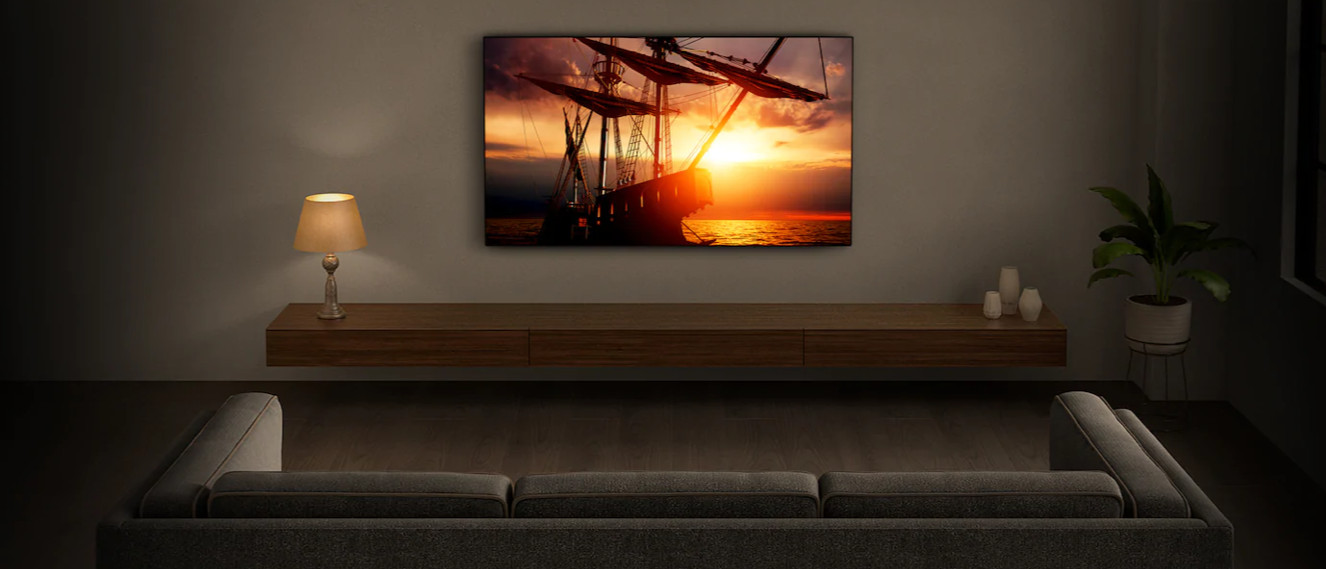TechRadar Verdict
The Sony Bravia X95J is a great upper-mid-range 4K HDR TV. It pairs lush 4K HDR performance with great HD upscaling, and beats ambient living room light with its X-Anti-Glare technology and high peak brightness. It’s not quite OLED levels of contrast, but if you’re after an ultra-bright TV that can sit in the middle of a well-lit living room, the Sony X95J is one of the best we’ve seen.
Pros
- +
Lush 4K HDR performance
- +
X-Anti-Glare and high brightness
- +
Great HD upscaling
- +
Fantastic sound quality
Cons
- -
Only two HDMI 2.1 ports
- -
Very slight contrast issues
- -
Overly bright on Standard
- -
SD upscaling could be better
Why you can trust TechRadar
One-minute review
Released toward the back end of 2021, the Sony Bravia X95J is one of the flagship TVs from the Japanese electronics manufacturer that promises some of the highest peak brightness and most comprehensive feature set of the entire 2021 lineup. And it delivers just that.
Thanks to X-Anti-Glare and higher peak brightness, it eliminates many of the minor issues we had with its slightly more affordable sibling, the Sony X90J, while retaining almost all of what made it such a great TV in the first place.
Compared to what Samsung and Sony made last year, it competes favorably with the Samsung QN90A that we reviewed, and outside of a few issues, we’d say the Sony X95J is the superior upper-mid-range model.
LG might still have an edge against Sony at this price point with its LG C1 OLED, but if you’re after an ultra-bright TV that can sit in the middle of a well-lit living room, the Sony X95J is one of the best we’ve seen.
Price and release date
- Part of Sony's 2021 TV collection
- Pricing starts at $1,799 / £1,799 / AU$3,295
- Competing with the LG C1 OLED and Samsung Q90A QLED
The Sony Bravia X95J is part of Sony’s 2021 TV collection and will be soon followed by the Sony X95K 4K Mini LED TV that’s due out by the end of 2022.
The key difference between the models is that the X95J uses a mini-LED backlighting system that should allow for better control over contrast. That is something we had some very slight issues with on the Sony X95J, so it’ll be nice to see what the screen looks like when it’s powered by mini-LEDs.
That said, while the Sony X95J will soon have its successor on store shelves, it’s not going away the second the X95K hits the market and should be available for at least another year or two.
Until it eventually leaves the market, the X95J will be available in three different sizes - 65 inches, 75 inches and 85 inches. We were sent the 65-inch model for review, but everything said above and below here should be applicable to all the models. Here’s what the pricing breakdown looks like:
- Sony XR-65X95J: $1,799 / £1,799 / AU$3,295
- Sony XR-75X95J: $2,299 / £1,999 / AU$4,495
- Sony XR-85X95J: $3,799 / £3,499 / AU$5,795
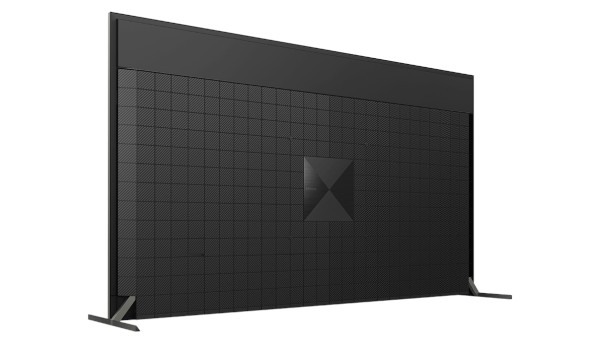
Design
- Legs can be set close or far apart
- Slightly thicker than competitors
- Only two HDMI 2.1 ports
Screen Sizes: 65, 75, 85-inches | 4K: Yes | HDR10: Yes | HLG: Yes | Dolby Vision/Atmos: Yes/Yes | Panel technology: LED-LCD | Smart TV: Google TV | Curved: No | 3D: No | Inputs: 2x HDMI 2.1 (1x eARC), 2x HDMI 2.0b, 2x USB, 1xRF, ethernet | Outputs: 1x optical
In terms of design, the Sony Bravia X95J doesn’t really break the mold - it doesn’t do anything too innovative or bold - however, it doesn't do anything wrong, either. It’s just practical design decisions that give the TV a solid look that will help it blend into your living room.
Starting at the bottom of the screen, the legs can be placed in a number of different configurations for wider or narrower tables and can be set higher or lower depending on whether you want to place a soundbar underneath the screen.
Because we plan on testing the Sony HT-A7000 shortly after reviewing this TV, we decided to go for legs on the outer edges and slightly propped up to allow a soundbar to go underneath.
The bezel around the outside of the screen is incredibly slim and rivals what Samsung and LG are doing with their flagship TVs - but at 2.40" (6.1 cm) the Sony X95J is slightly thicker in the back than, say, an LG OLED or a high-end Samsung QLED TV.
The obvious difference between this Sony TV and Samsung and Sony’s screens is the display technology. Sony is still using conventional LED-LCD technology while Samsung and LG have jumped over to mini-LED and OLED with their flagship TVs. We’ll discuss how that impacts performance in a minute, but its impact on design is that the X95J is slightly thicker.
Spin the TV around to the back and you’ll find the port selection that can be hidden by some included plastic paneling.
Your options for inputs include four HDMI ports, two of which are HDMI 2.1, of which one of those is the eARC port - a number that we wish was slightly higher, considering many folks will be picking this up to pair with their PS5 or Xbox Series X.
Limiting the full-spec HDMI 2.1 inputs to ports three and four is unfortunate, plain and simple.
Ultimately none of the design decisions Sony made for the X95J are deal-breakers, but they are minor problems that prevent the X95J from winning our full approval.
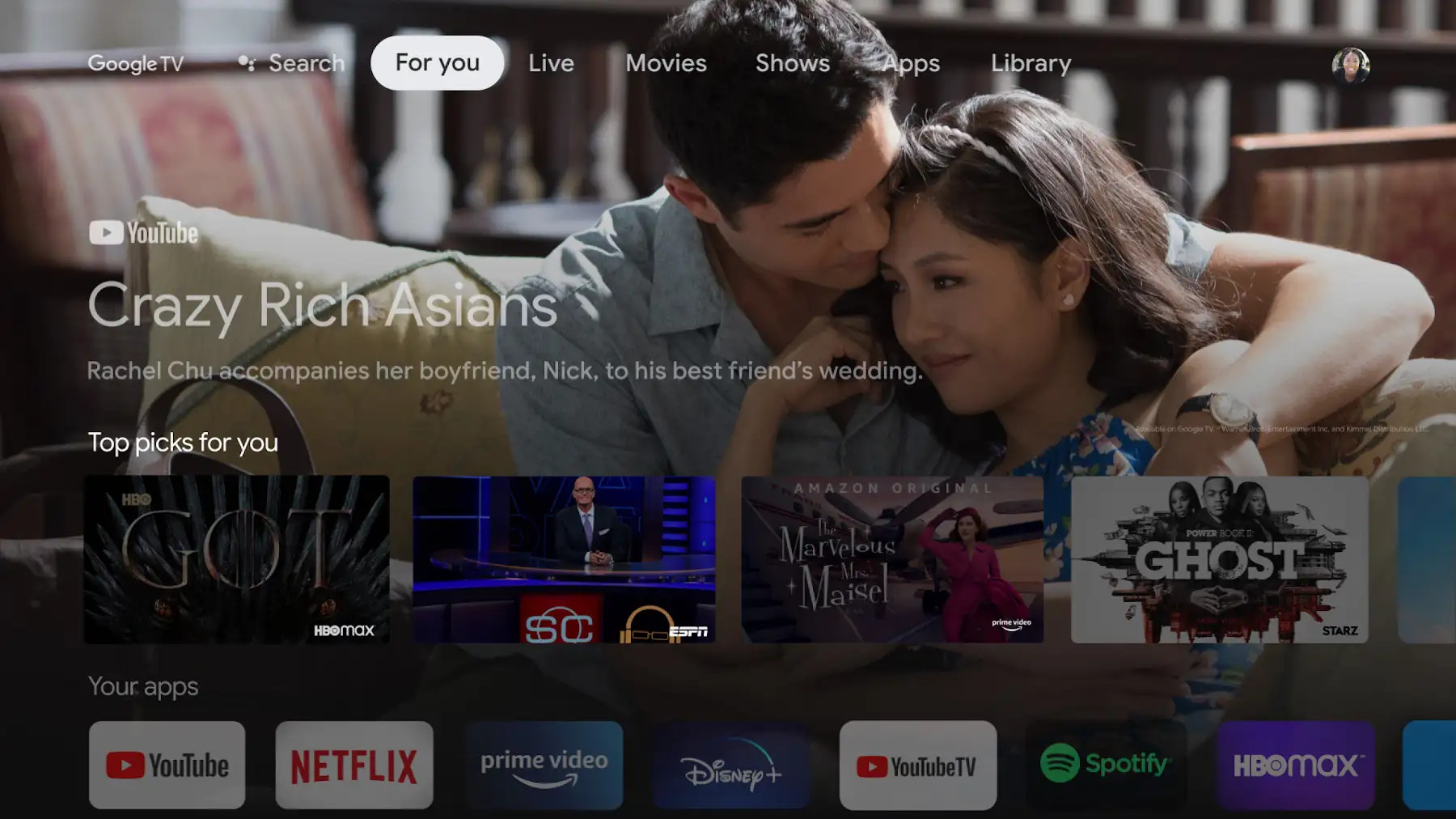
Smart TV (Google TV)
- Slick, content-first presentation
- Supports Chromecast built-in and Google Assistant
- One of the few TVs with Bravia Core service
Turn on the Sony Bravia X95J and you’ll be greeted by Google TV, the revamped successor to Android TV that does away with rows and instead focuses on new shows and movies. That focus requires a better content recommendation algorithm, which Google has done a very good job of providing.
Instead of a traditional home screen like you’d find on Roku, Google TV launches right into a For You page that displays movies and shows you’re most likely to enjoy watching. From there you can move to other tabs for movies and TV shows, as well as a tab for your watch list that you can update from your phone.
Beyond being good at analyzing your watching habits, Google TV comes with a number of nifty features including built-in Google Assistant and Chromecast Built-in.
The former can be used via the remote’s Google Assistant button or - if you’re feeling more adventurous - via the TV’s built-in microphone. The latter requires you to physically turn on a switch on the back of the TV to use it and it comes disabled out of the box.
As for the built-in Casting, that works just like any other Chromecast device and it’s a breeze to use.
Out of the box, Google has all the main streaming services installed including Netflix, Amazon Prime Video, Hulu, Disney Plus and others, but you can always go into the Google Play Store to download more.
Jumping between apps is snappy thanks to the powerful Cognitive Processor XR sitting at the center of the TV, and content starts quickly.
Four of these apps can be found directly on the Bluetooth remote that comes with the TV (Netflix, YouTube, Disney Plus and Prime Video) which should give you easy access to the most popular streaming services.
Also on the remote are buttons for a DVR and Guide if you want to replace your cable remote with this one, as well as basic playback buttons.
On top of all the regular streaming services you’ll find elsewhere, the X95J also has access to Sony Bravia Core. Simply buying an X90J before February 23, 2024 entitles you to 10 movie credits to use against a selection of at least 300 movies.
Those films include most of Sony Picture Entertainment’s catalogue like Spider-Man: Into the Spider-Verse and Jumanji: The Next Level. It’s something no other TV has at this point and considering it’s essentially free to try, it’s absolutely worth taking advantage of while you can.
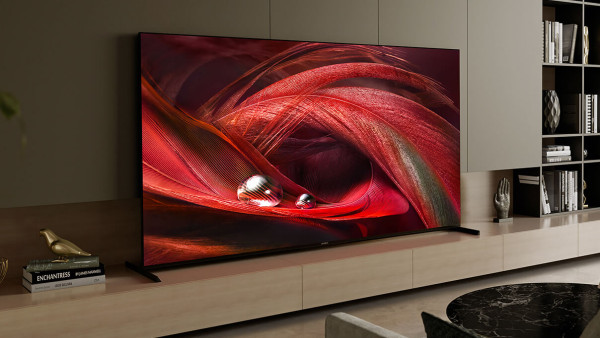
Picture quality
- Exceptional image quality
- Great upscaling thanks to Cognitive Processor XR
- So bright... maybe too bright?
- Lack of robust VRR support
To test the Sony X95J’s performance, we put it through a gauntlet of gruelling tests, from upscaling SD picture quality to outputting some of the brightest tones in 4K HDR.
That meant streaming both Dolby Vision content like The Book of Boba Fett on Disney Plus and pulling in OTA content using an indoor HD antenna. Beyond that, we tested how games looked on the TV using an upcoming game on PS5 and regular HD streaming via HBO Max.
All these tasks rely heavily on Sony’s Cognitive Processor XR - the brains behind the brawn that we first saw in action on the Sony X90J.
What makes the Cognitive Processor XR special is its ability to divide up a scene into several parts, and then can figure out what the focal point is. If the processor sees a bright neon sign it knows to boost the brightness and clarity of that sign.
If it identifies a person, it works to enhance their skin tone and any fine details like hair or wrinkles. This happens instantly on a frame-by-frame basis, all behind the scenes. That makes it special compared to other processors that are only looking at information like peak scene brightness and adjusting the backlight from there.
That said, as impressive as the Cognitive Processor XR is, it’s not perfect.
If you plan on watching sub-HD content on your 65-inch X95J, chances are good that it’s going to look like you’re streaming from the moon - content is going to be grainy and, depending on your reception even pixelated, and there’s not much the upscaling algorithm or Sony’s excellent Cognitive Processor XR can do about it.
That’s not Sony’s fault per se, as there’s not much you can do without data to work with, but it could mean that you’ll want to go for a smaller screen should you plan on watching a lot of sub-HD content.
Upping the resolution to HD, however, and you’ll be in for a treat. For our first HD outing, we watched This is 40 on HBO Max and the movie looked fantastic. Despite only streaming in HD, the film had a crispness that belied its native resolution.
Not all HD films will look quite as outstanding - Chicago on Showtime certainly didn’t upscale as nicely - but for the most part, it’s fair to expect some decent results in this area.
What the X95J is built for, however, is 4K HDR streaming - and that’s where you’ll find its best performance. Using a full array LED-LCD screen might have its drawbacks where contrast is concerned, but right out of the box the Sony X95J truly shines in terms of brightness.
Incredible details we had never seen before in shows like The Book of Boba Fett on Disney Plus began appearing before our eyes, all of which were simply too dim on other TVs to really make out.
For some, though, the heaping helping of brightness can be too much, especially late at night when you’re trying to unwind.
To help deal with this, Sony built an ambient light sensor into the X95J, which is great in theory as it should reduce the light output when it detects a dark room, however you’ll still need to play around in the settings to get everything just right.
Ultimately, the extra brightness is more good than bad - but it does take some getting used to and some experience with tweaking settings to get your optimal viewing experience.
For gamers, the Sony X95J is a solid option. Although it only has two HDMI 2.1 ports, we found its performance with PS5 games to be exemplary.
It has a great response time with gaming at 4K/60 and can handle games at 4K/120 as long as the system’s connected to HDMI ports three and four. An upcoming PS5 game we were playing looks absolutely phenomenal on the TV with beautiful HDR highlights and incredible details.
The only downside for gamers here is that Sony doesn’t quite support all versions of VRR on this model - unlike LG and Samsung that both support VRR (and in some cases both FreeSync and G-Sync) on their equivalent upper-mid-range models. It's something Sony has promised via a firmware update, but we're still waiting for it.
Bright, detail-rich and nicely saturated, Sony’s X95J is a wonderful performer in the picture department and with good motion handling and upscaling, it’s built to handle (nearly) anything you can throw at it.
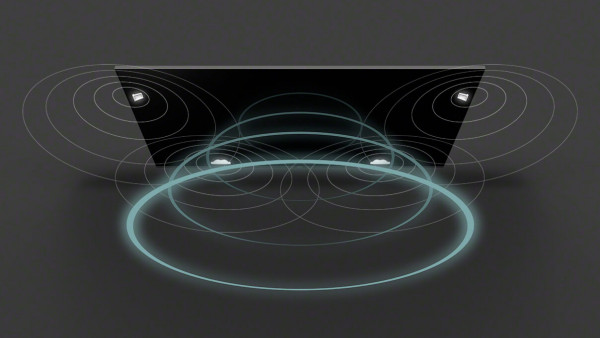
Audio
- Strong audio performance thanks to 50W system
- Upscaled audio is fine, but it's no Atmos
- Thankfully, with eARC you can output Atmos to a soundbar
Like its visual prowess, the X95J is naturally gifted at audio reproduction. That’s because it’s using a very comprehensive sound system to maximize the audio that comes from the screen: inside you’ve got two mid-range drivers, two tweeters and one built-in subwoofer.
This veritable audio arsenal helps the X95J excel at the entire audio spectrum. Mid-range dialogue coming from the mid-range drivers comes through clearly, while the sub handles all the bass. Tweeters are great for music where the upper treble matters most, or have them all working in tandem when you’re playing something from Spotify.
What the TV can’t do, at least not well, is 3D surround sound. Yes, you can get a version of simulated surround sound thanks to the Cognitive Processor XR, but it doesn’t ever sound quite as convincing as a Dolby Atmos system. The good news there, however, is that the TV can pass Dolby Atmos sound from its eARC port to any Dolby Atmos speaker system or soundbar.
The result? Dolby Atmos audio is there for you whenever you feel the need to upgrade to an Atmos system - or you can stick to regular surround sound from the TV. Either option sounds great, and it will all depend on whether you want to add on another component to the TV.
Should you buy the Sony X95J 4K HDR TV?
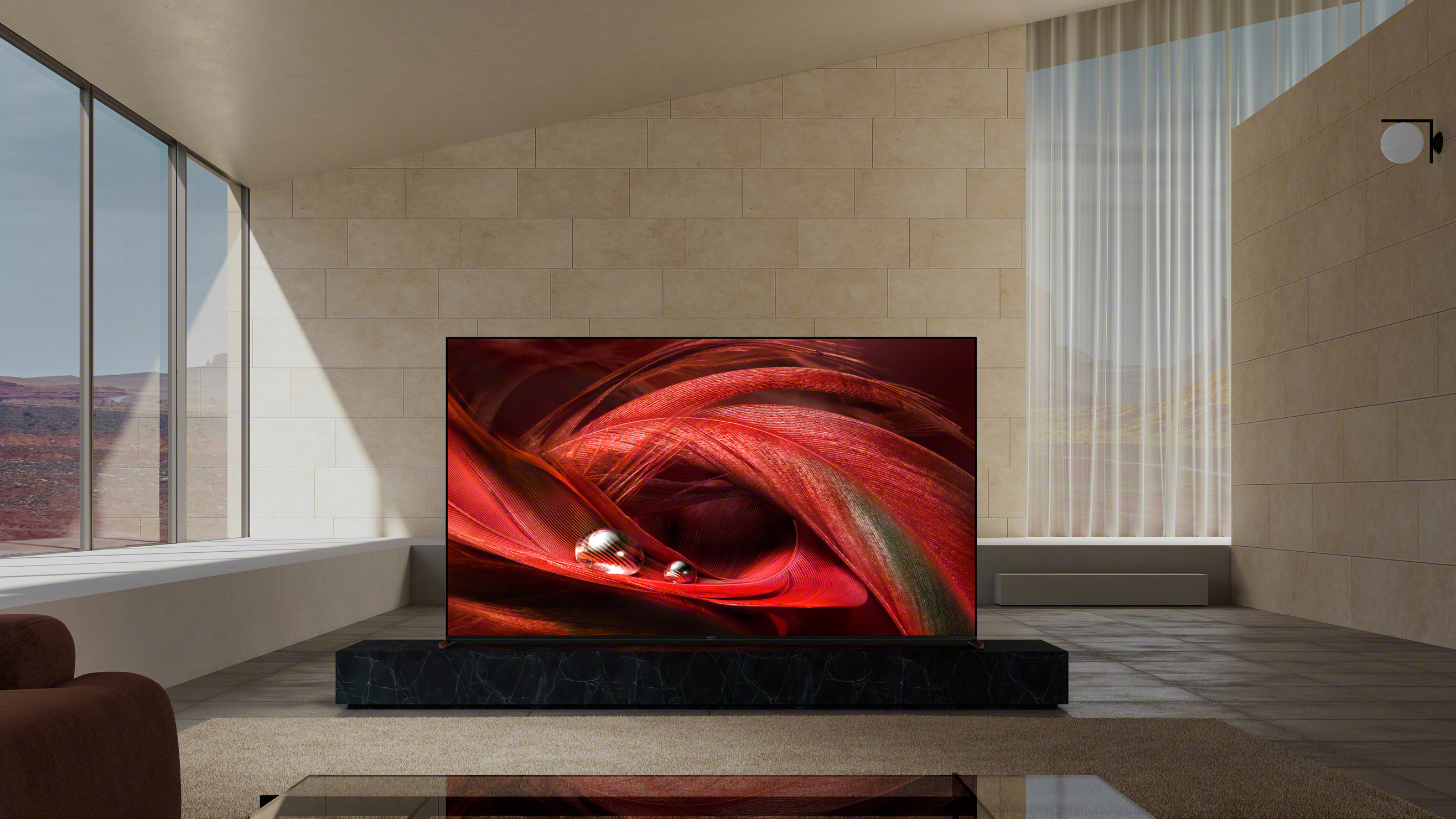
Buy it if…
You’re looking for a bright TV to go in your bright living room
If you’ve found that TVs in the past have always had awful glare, skip the all-glass OLED screen and go for the X95J instead. With higher peak brightness and X-Anti-Glare technology it’s far better suited to hold up to any and all ambient light.
You’re looking for great HD upscaling
Although it faltered at times, overall the Sony X95J performed admirably upscaling HD/SDR sources to 4K/HDR. HD movies that we watched were bright, colorful and above all else, crisp and clean for 95% of the film.
You’re after a better smart TV experience
Every smart TV platform brings something special to the table, but Google TV just delivers in so many different ways. We love the content recommendations that greet you on the homescreen, the built-in Google Assistant that can answer your questions and the ability to Cast most content from your phone to your TV. It’s practical, it’s pretty and it’s fast.
Don’t buy it if…
The prospect of a mini-LED TV is too tempting
Considering how close we are to the 2022 Sony X95K with mini-LED, it might be worth holding out just a bit longer to see how much better that screen is before you plunk down the cash for an X95J. It should have better contrast and brightness
You plan on connecting it to your gaming PC
Without robust VRR support right now, PC gamers are better off looking elsewhere for a TV - one that at least would support G-Sync and FreeSync.
You’re looking for a home theater TV
Because it focuses on being ultra-bright and isn’t the be-all, end-all in terms of contrast, we’d recommend buying another TV for your light-controlled home theater. If you have the power to control the ambient light and prefer to watch movies and shows in complete darkness, then we’d recommend something like the LG C1 OLED instead.
- Curious what else is out there? Check out our guide to the best TVs of 2022
Nick Pino is Managing Editor, TV and AV for TechRadar's sister site, Tom's Guide. Previously, he was the Senior Editor of Home Entertainment at TechRadar, covering TVs, headphones, speakers, video games, VR and streaming devices. He's also written for GamesRadar+, Official Xbox Magazine, PC Gamer and other outlets over the last decade, and he has a degree in computer science he's not using if anyone wants it.
